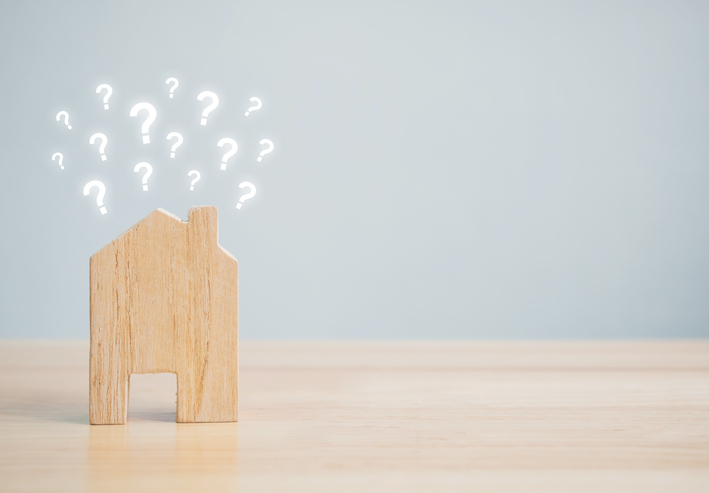 From financial experts to real estate agents, many people have expressed concern about the affordability of houses for first-time home buyers. In the past, so-called “starter homes” were plentiful, the result of smart urban planning, innovative government programs and the collective wisdom of individual builders. But in recent decades starter homes have become much less common, leaving many younger buyers out in the cold.
From financial experts to real estate agents, many people have expressed concern about the affordability of houses for first-time home buyers. In the past, so-called “starter homes” were plentiful, the result of smart urban planning, innovative government programs and the collective wisdom of individual builders. But in recent decades starter homes have become much less common, leaving many younger buyers out in the cold.
The fact that starter homes have become an endangered species in many parts of the country is certainly cause for concern, but first-time buyers should not despair. They may be harder to find these days, but starter homes still exist in most real estate markets. Here are six smart strategies first-time buyers can use to find them.
Location, Location, Location
Seek out up-and-coming neighborhoods. There are unique gems in our Apple Valley and Lakeville area. Some older neighborhoods contain “diamonds in the rough”, if you know what to look for. As neighborhoods turn over to new generations, some of these areas even become fashionable again. We can help you find those hidden starter homes.
Pre-Approval Helps You Get Ahead of the Competition
Get pre-approved for financing before you shop. Competition can be fierce for starter homes, so it pays to be prepared. Getting pre-approved for a mortgage, before you shop, can give you a leg up on the competition, and send your offer to the top of the pile. When looking at starter homes, it can be highly advantageous to come to a showing ready to make an offer, if all of your conditions are met. Not having a pre-approval can cause delays, that can easily take you out of the running.
The Importance of Flexibility and Compromising
Be flexible. Starter homes are often older properties, and they may not have the latest amenities. If you want an affordable home, you may need to compromise a bit, so build some flexibility into your home buying process. Strange paint colors on the wall? Shag carpet? Outdated cabinetry? Look beyond the “warts” and have a vision for making a space your own.
Hire a Knowledgeable Real Estate Agent
Work with an experienced agent. Not all real estate agents are well-versed in the starter home market, so choose your representative with care. Let the agent know you are specifically targeting starter homes – it will save you both a lot of time and frustration. Be honest and upfront with your agent so that together you can discover a great home to fit your needs.
Be Mindful that Real Estate is Financial Before Emotional
Keep your emotions in check. Buying a home is a financial transaction, but it is also an emotional experience. Even so, it pays to keep your emotions in check, especially when you are shopping for the first time. Falling in love with a home beyond your financial means will only lead to frustration and heartbreak. Similarly, biting off more than you can chew, as far as renovations, can quickly turn a starter home into a money pit. A quality real estate agent will be experienced in being able to guide you to knowing the difference between a minor repair or cosmetic changes versus complete home demolition and renovation.
Prioritize Your Needs and Wants
Prioritize location as much as price. The three most important things in real estate are location, location and location (see our first tip!). Where your starter home is located can matter as much as how many bedrooms it has or what kind of tile is in the bathroom. Making location a priority can help you drive the best bargain, but the right location can also positively influence future appreciation. Are you willing to sacrifice a shorter commute for a nicer living space where you can get more for your money? Or would you prefer a smaller space with quick travel times to where you work each day?
Finding the perfect starter home is no easy task, especially in a hot and competitive real estate market. If you want to get a great home at an even better price, you need to set a strategy and stick to it. The six tips listed above can help you find those hidden starter homes, so you can get your home owning experience off to a profitable start.
If this feels like an overwhelming task, and you aren’t sure where to begin, please don’t hesitate to call Ryan at (651) 503-4158.
Image credit: Getty Images/monkeybusinessimages





 Mortgage lenders require a lot of documentation to complete a mortgage application. Forgetting something or getting the wrong information can cause lengthy delays. It could even cause borrowers to miss a deadline and lose the house they have their eyes on. Therefore, applicants should make sure they have all the documentation they need organized and ready to go, prior to getting your
Mortgage lenders require a lot of documentation to complete a mortgage application. Forgetting something or getting the wrong information can cause lengthy delays. It could even cause borrowers to miss a deadline and lose the house they have their eyes on. Therefore, applicants should make sure they have all the documentation they need organized and ready to go, prior to getting your 


 Should I Stay or Should I Go? Was “The Clash” singing about your home??? Now get that song out of your head, and if you’re under 30, just disregard. And before you go on an 80’s YouTube music video bender, focus and finish reading this helpful article first! 🙂
Should I Stay or Should I Go? Was “The Clash” singing about your home??? Now get that song out of your head, and if you’re under 30, just disregard. And before you go on an 80’s YouTube music video bender, focus and finish reading this helpful article first! 🙂 
 quickly, if they haven’t researched closing costs. Property fees are just the beginning. Loans, insurance, taxes and title, and everything else associated with buying a home will have additional charges. Each one seems minimal, but together they can quickly add upwards to 5 percent of a home’s price to the final total.
quickly, if they haven’t researched closing costs. Property fees are just the beginning. Loans, insurance, taxes and title, and everything else associated with buying a home will have additional charges. Each one seems minimal, but together they can quickly add upwards to 5 percent of a home’s price to the final total.